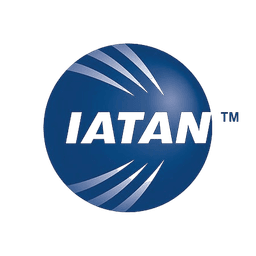


Our co-founder Nick Stanziano explains what the Great Inca Road means to him, our company and Peru as a whole.
The Expedition
On April 14, 2017, a team of hardened explorers, tourism professionals and private organizations will execute a major expedition along the greatest of all Inca roads that stretches 2,000 miles between what were two capitals of the Inca Empire: Tumebamba, near modern day Cuenca, Ecuador and Cusco, Peru, in the South. The continual five-month trek will be captured and transmitted through social networks in real-time to viewers all over the world.
Section Type: standardWidthImageS
A map of the Great Inca Trail wending through the heart of Peru, along the spine of the Andes.

What’s in a Road?
The Great Inca Trail is part of a larger Andean road network called the Qhapaq Ñan, the largest and one of the newest UNESCO World Heritage sites. It’s made up of thousands of miles of stone-paved roads that once linked the most advanced society in South America, the Inca Empire. While Incas could only be considered an empire for 100 years, they were the culmination of successive civilizations that were born 5,000 years earlier – at the same time as those in Mesopotamia and Egypt. If we are to understand ancient Peru, we need to understand the road that connected all the dots.
Section Type: standardWidthImageS
Accessing remote areas on the Great Inca Trail

Our company, SA Expeditions brings thousands of curious travelers to Machu Picchu, many of whom trek on the roads leading to the Incas’ crown jewel. We’ve also been developing experiences on a little-known Inca path in the Choquechaca Valley near Cusco, creating a trek to Machu Picchu in conjunction with the communities along the route. The lessons learned and relationships forged in Choquechaca will allow us to scale up our model along a larger swath of Inca roads in the Andes.
Our Commitment - Awareness and Tourism Development
“We’re going let you all know it exists. And then were going to be the first to bring you along to discover it for yourself!”
Awareness. We will be sharing one of humanity’s great public works, intimately bringing the world along its paths, its lost cities and the contemporary cultures who are its keepers. Together with our partners in private industry and government in Peru, we hope to elevate this road to its rightful place in the human story. We also want to remind Peru of an inheritance from its ancestors and promote the road as a tool for dignified development of the rural countryside.
Section Type: standardWidthImageS
Open spaces

Tourism Development. We want to build the operational know-how to execute tourism along shorter, select sections of the road that can be explored in a few days and so we will partner with local and likeminded ground operators across the Andes. Together we will learn how to execute tourism on the Qhapaq Ñan, working in tandem, using our complementary strengths to bring travelers along to discover it for themselves.
A few models to consider
Section Type: imageOnLeftParagraphToRight
Espinosa walked over 10,000 miles of Inca roads and wrote the definitive book “La Gran Ruta Inca”. Espinosa’s efforts planted the seeds that eventually brought six Andean countries and the UN together in a strategy to preserve and promote the road system as a UNESCO World Heritage site. Espinosa’s maps and years of work on the subject are the foundation for our exploration two decades later.
La Gran Ruta Inca by Ricardo Espinosa Reyes

A Peruvian Model. This isn’t the first time someone has decided to establish (or re-establish) a several-thousand-mile long walking path along the Qhapaq Ñan. In the late 1990’s, the Peruvian adventurer Ricardo Espinosa Reyes, had the same idea along what he called the “Great Inca Route”.
Espinosa walked over 10,000 miles of Inca roads and wrote the definitive book “La Gran Ruta Inca”, which serves as a bible for our expedition team. Espinosa’s efforts planted the seeds that eventually brought six Andean countries and the UN together in a strategy to preserve and promote the road system as a UNESCO World Heritage site. Espinosa’s maps and years of work on the subject are the foundation for our exploration two decades later.
A North American Model. In 1932 Clinton Clarke decided that he wanted to create a contiguous trail from the border of Mexico to the Canadian border following the crest of the Sierra Nevada and Cascade mountain ranges, the Pacific Crest Trail. It took 60 years, millions of dollars and (eventual) government involvement to develop a trail that is 2,600 miles long. In the 2017 season alone nearly 700 people completed the trail in its entirety.
Where the road goes from here
The Great Inca Road between Cuenca, Ecuador and Cusco, Peru has its own set of challenges, and re-establishing every mile of its 2,000-mile stone path will take decades of support from governments, private industry and the thousands of communities along its route. Today, in 2017, this great living road needs passionate and responsible humans to share its magic and reimagine how tourism can play a role in its conservation. This is exactly what SA Expeditions and our team of explorers, tourism specialists and dreamers is going to do.
Follow us on this transformative journey on Facebook "The Great Inca Trail", real time and every day, along one of the most remote stretches of the Andes...The Great Inca Trail known as the Qhapaq Ñan!
Section Type: standardWidthImageS
Sharing the day's journey

Section Type: backgroundOnly
Read more
Click on the links to find out more about...
Some of the members of our team: John Leivers and our passionate archaeologists


Copyright © 2025 SA Luxury Expeditions LLC, All rights reserved | 95 Third Street, 2nd floor, San Francisco, CA, 94103 | 415-549-8049
California Registered Seller of Travel - CST 2115890-50. Registration as a seller of travel does not constitute approval by the state of California.










